There’s an observation deck at Pea Island National Wildlife Refuge as the North Pond Trail takes a 90-degree bend to the north. From the deck looking west, the endless expanse of Pamlico Sound reaches to the horizon.
But in front of that, there is a verdant marsh and a small rise of dry land, allowing maritime shrub to take root. The outstanding features of this small island in the marsh are the 50 or 60 great egrets perched among the branches of the shrubs. There seems to be a few great blue heron as well, but they’re smaller than the egrets, and their color tends to blend with the vegetation.
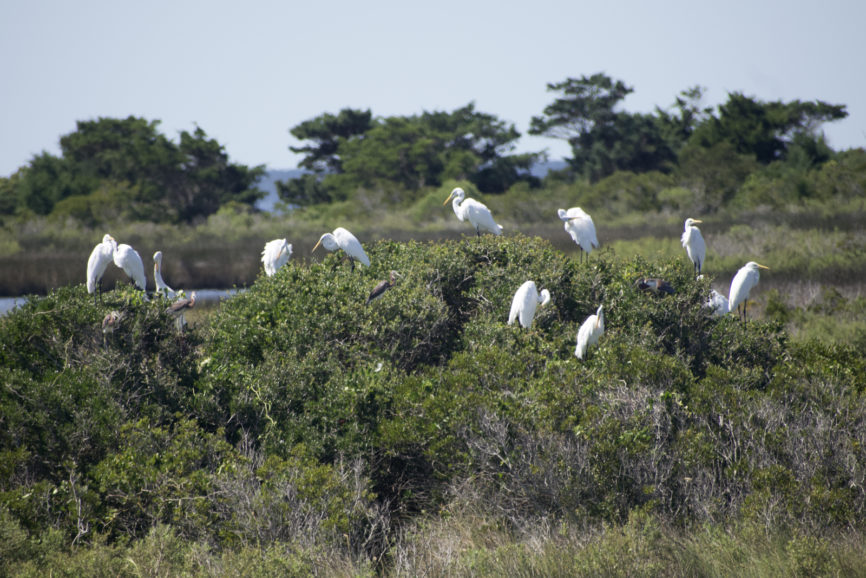
The egrets and blue heron are year-round residents of the refuge, but what PINWR is known for are the migratory waterfowl and seabirds that make it their fall and winter home every year.
For birders, this is paradise.
According to US Fish and Wildlife, which manages the refuge, more than 400 species of birds are a regular part of the site’s ecosystem, and that doesn’t include the 50 or 60 species of birds that accidentally show up or are very rare.
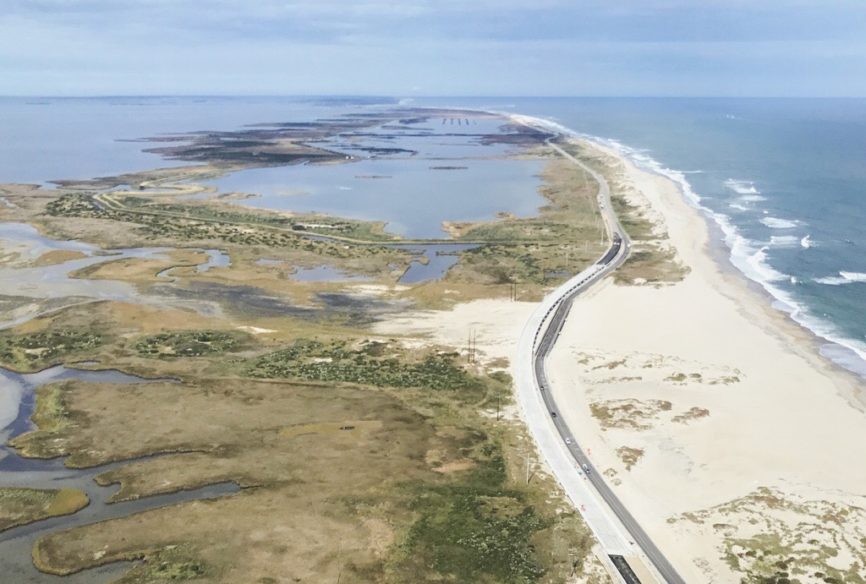
Late fall—November to early December—is considered the most spectacular time of the year. That’s when the migrating waterfowl fill the impoundments. The sound is a wonderful cacophony of duck, geese, and other bird calls filling the air.
Snow geese—and some tundra swans—begin to arrive at the end of October, but most of the migration comes in November when the waters are filled with the sound and sight of tens of thousands of birds. From a distance, it can almost seem as though the waters are covered in snow.
During the fall of the year, there are too many kinds of ducks to list them all. Northern Shoveler, Northern Pintail, and Green-winged Teal are some of the most common. Bufflehead, Hooded Merganser, Red-breasted Merganser, and Ruddy Ducks are all regular fall and winter visitors. And that is a very partial list.
But it’s not just the migratory waterfowl that make Pea Island their winter home. Increasingly the American White Pelican has been settling into the waters of the refuge.

It is a huge bird—one of the largest in North America—with a wingspan that often approaches 10′ tip to tip. Unlike its cousin, the brown pelican, the American White Pelican feeds from the water’s surface, dipping its beak beneath the water to scoop up fish. It does not dive into the water as the brown pelican does.
Nor does it seem to like the open waters of the ocean. White Pelicans breed in freshwater wetlands and lakes in the continent’s interior, migrating to warmer winter waters as temperatures cool. In the past, the species has migrated almost entirely to states south of North Carolina, but an increasing number of birds taking up residence at the refuge indicates a behavior change.
Pea Island is the northern tip of Hatteras Island. As national wildlife refuges go, it’s not very big at 5834 acres of accessible area, including impoundments, dikes surrounding the impoundments, and beach. There’s also an additional 25,7000 acres of protected area in Pamlico Sound, much of that shallow estuarine waters ideal for exploring in a kayak.
The refuge got its name from the beach peas (Stropostyles helvula) that at one time were prolific on the backside of the dunes. A legume, the plant, also known as an Amberique Bean, would mature as the first of the migrating geese arrived.
The dikes surrounding the impoundments are covered in scrub pines, wax myrtle, and a remarkable intertwining of brush and trees. It seems a forbidding place for any but the hardiest of animals life, yet among the branches or in the grasses, an incredible variety of birds thrive.
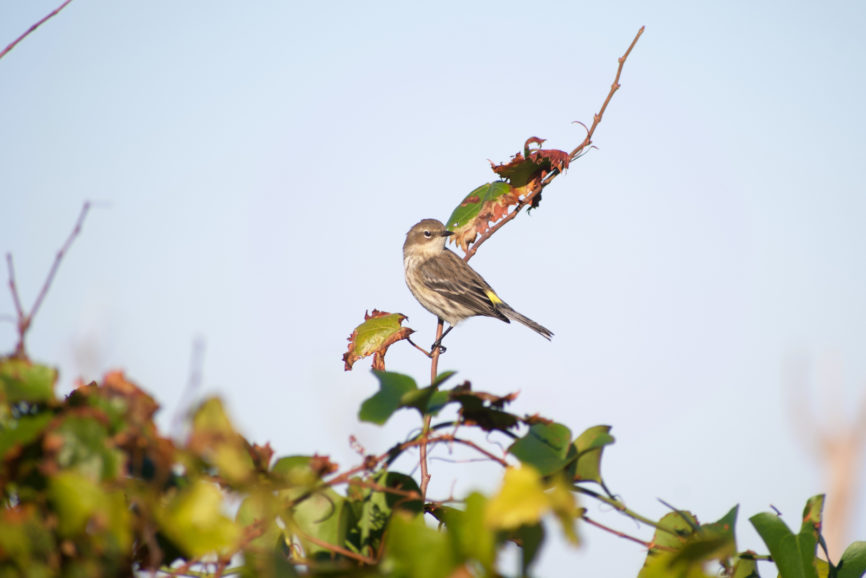
In fall and winter, yellow-rumped warblers fill the trees. They are truly ubiquitous, seemingly everywhere at all times, flitting from branch to branch. They are by no means the only songbird at the refuge, however. Carolina wrens sing throughout the year. Cardinals are always around. In the fall and winter, song sparrows make the refuge their home.
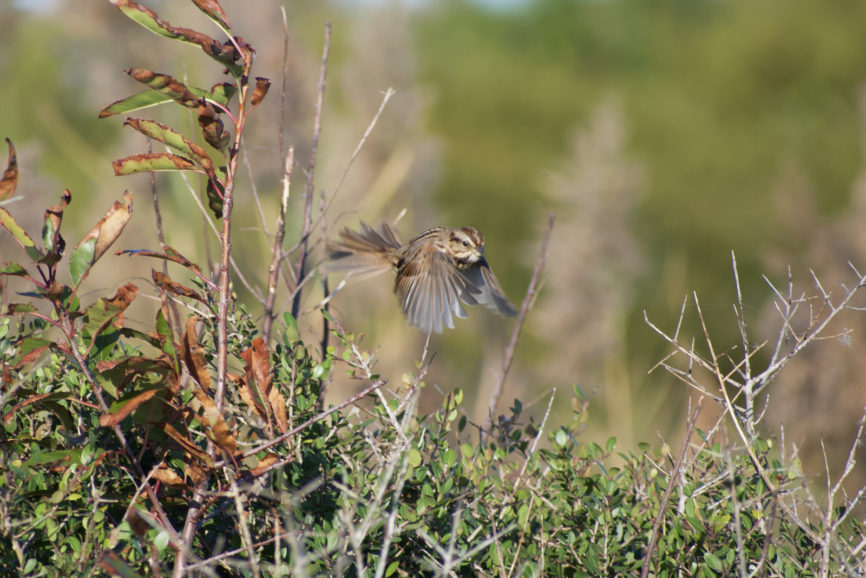
What is perhaps most impressive is, in what appears to be a forbidding landscape, birds are not the only animal that is thriving. White-tailed deer run among the shrubs. Raccoons are everywhere, as are possums. Otters have made the impoundments their home. And that is just a few of the mammals that live among the dikes and shrub growth.
The refuge extends to the ocean; in the inner dune, among the seagrass, there is the constant movement of wings and chitter of birds.
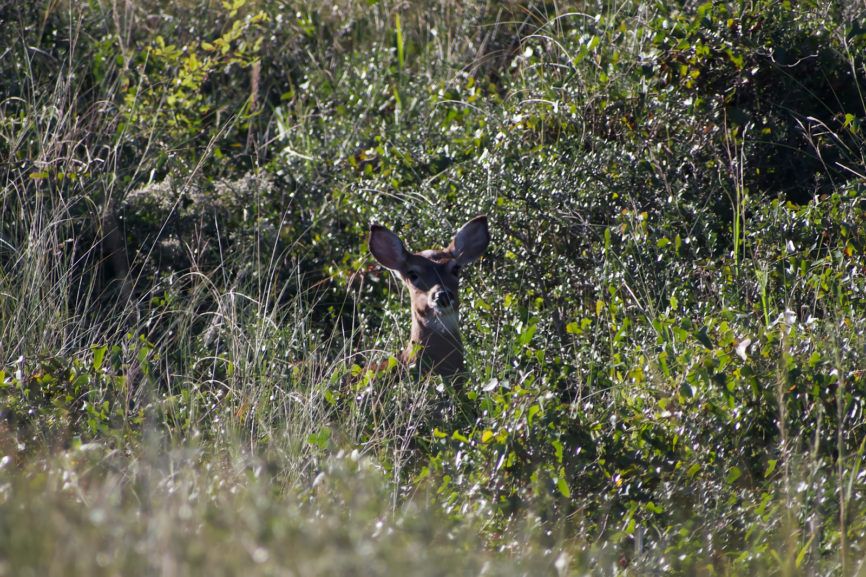
PINWR is a place that calls out to be explored, but one of its best features is that it can be any level of exploration, from a leisurely stroll along a dike with kids to a longer, more challenging hike along the perimeter of an impoundment.
And adding to the fascination, every visit carries with it the possibility that something new will be seen every time.
